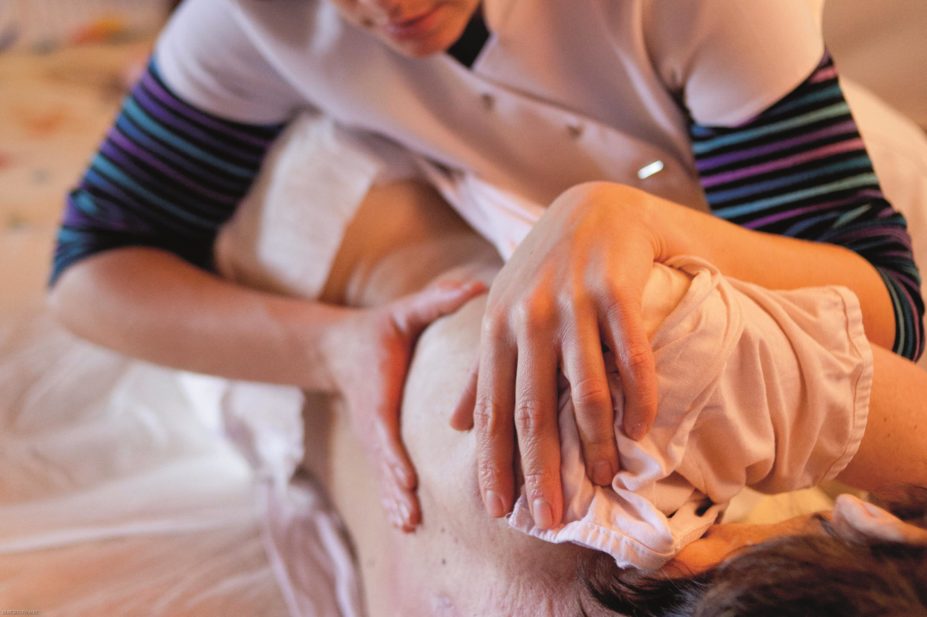
Phanie / Alamy Stock Photo
A dying patient’s medicines should be reviewed daily and symptom relief individualised to their needs during the last days of life, according to recommendations from the National Institute for Health and Care Excellence (NICE).
A final guideline for the NHS in England, published on 16 December 2015, advises on a range of measures to improve end-of-life care in the final two or three days before death. It follows the withdrawal in 2014 of the Liverpool Care Pathway (LCP) for the Care of the Dying Adult, after a government review found failings in how the palliative care recommendations were implemented.
As first reported in July 2015 when its draft guideline was released, NICE recommends a patient’s medicines are reviewed once it is recognised they are entering the last days of life. It sets out steps to decide whether prescribed medicines are clinically appropriate using the patient’s individualised care plan. Any medicines not providing symptomatic benefit should be stopped after a discussion with the patient, it says, while alternative routes of administering medicines should also be considered.
The guideline gives advice on providing symptom relief, including managing pain and anxiety, delirium and agitation. The dying person’s preferences and views should be taken into account when considering medicines for symptom control, it says.
A focus on individualised end-of-life care is the foundation of NICE’s new recommendations. Sam Ahmedzai, emeritus professor of palliative medicine at the University of Sheffield and chair of NICE’s guideline development group, says the new guideline will give health professionals a “comprehensive, humane and evidence-based framework” for improving the care of dying people, based on their needs and wishes.
Although the Liverpool Care Pathway was originally an “admirable idea” to improve end-of-life care, “its implementation became increasingly controversial over the years with stories of fluids and medicines being withheld, over-sedating the dying person”, Admedzai adds.
“There were also problems with inexperienced staff recognising when someone was truly close to death, or if they had a possibility of recovery. It became seen as a ‘tick-box exercise’ and a ‘one-size-fits-all’ approach,” he explains.
The new guideline aims to help health professionals identify when a person may be entering their last days of life, or if they are stabilising or improving, and to seek advice from more experienced colleagues if there is any uncertainty. It also advises that a named health professional should be identified to lead on the patient’s care, and says no tests should be carried out in the patient’s last days unless there is clear clinical need.
Dying patients should be supported to drink if they are able and wish to, and a person’s hydration should be assessed daily in case of the need of clinically assisted hydration. The risks and benefits of this should be discussed with the patient and those important to them.
NICE recommends prescribers consider a range of medicines for symptom relief that do not currently have UK marketing authorisation for the indication in hand. These include an opioid, a benzodiazepine or a combination of the two for managing breathlessness; and hyoscine butylbromide or octreotide for nausea or vomiting in patients with obstructive bowel disorders. The guidance also recommends atropine, glycopyrronium bromide, hyoscine butylbromide or hyoscine hydrobromide for managing noisy respiratory secretions. In each instance prescribers should follow relevant professional guidance and take full responsibility for the decision.
Anticipatory prescribing is also encouraged to ensure patients have access to medicines for symptom control in the last days of life. NICE says these should be based on likely future symptoms in individual patients, not in a blanket manner. It suggests commissioners develop agreements with local pharmacies to keep an agreed list of drugs in stock and give community staff details of local on-call pharmacies.
NICE also supports clear communication between health professionals, a dying patient and their family or friends, and emphasises shared decision-making. This includes developing individualised care plans taking into account the dying person’s needs and wishes. It follows concerns in a report by the Parliamentary and Health Service Ombudsmanin May 2015 around a lack of communication and poor symptom control when caring for dying patients.
Adam Firth, a GP and independent committee member, said: “The communication and symptom control aspects of the guidance will help the whole healthcare team to be able to work together to ensure that people die with dignity, whenever possible in the place of their choosing and with their symptoms effectively controlled.”
Around half a million people die each year in England. The UK was ranked first for its end-of-life care among 80 countries in the Economist Intelligence Unit’s Quality of Death Index in both 2010 and 2015.
You may also be interested in

Patient access to 24/7 palliative care medicines is ‘insufficient’, finds House of Commons-commissioned report

Lead paediatric palliative care pharmacists should be part of local plans, says RPS
